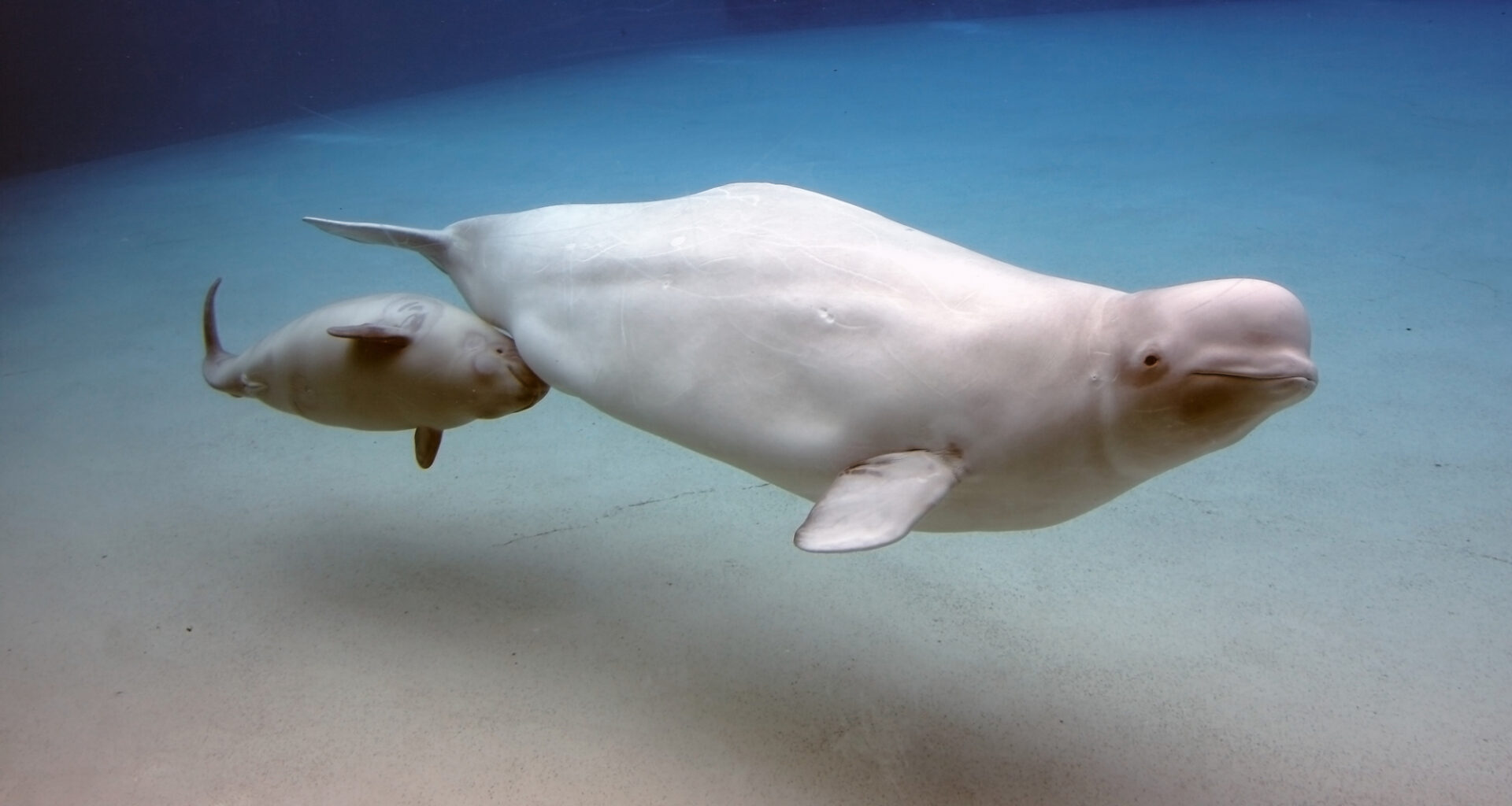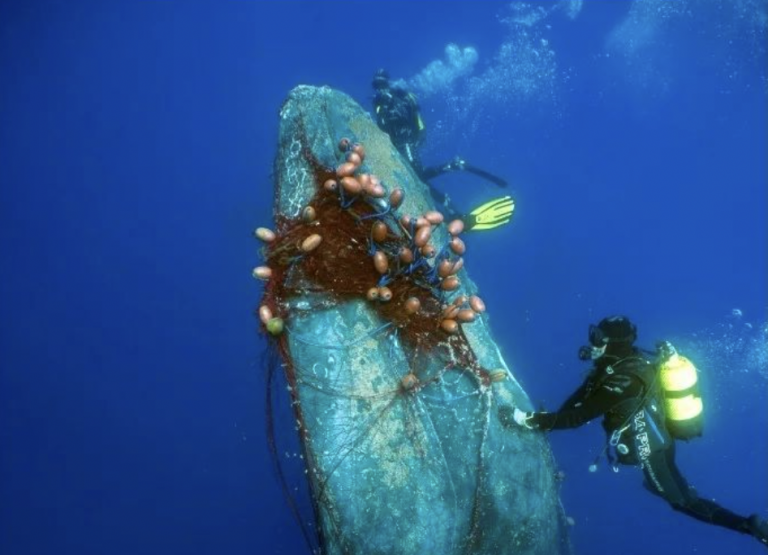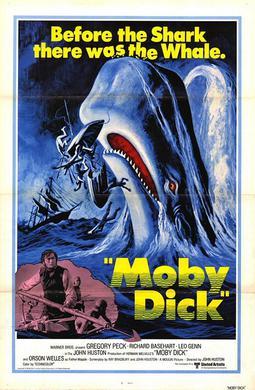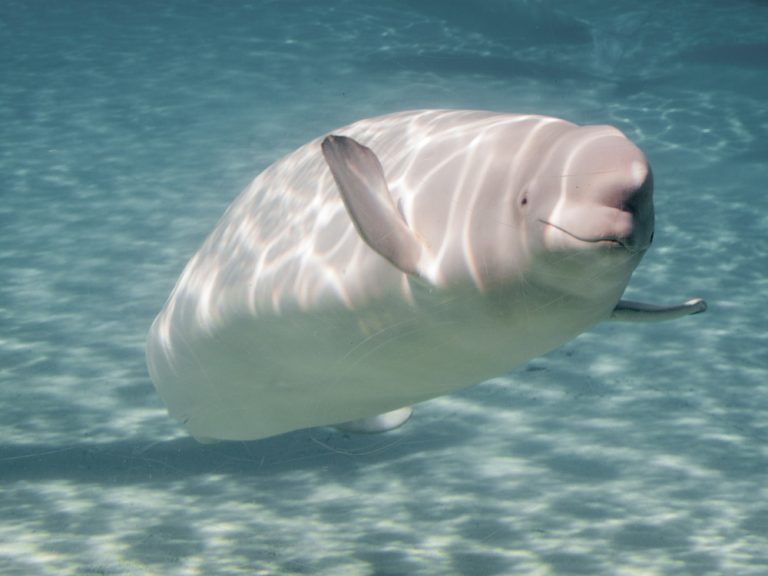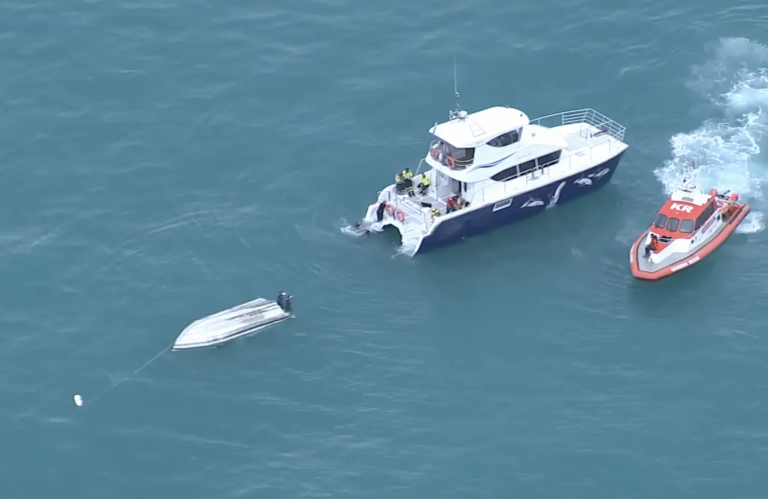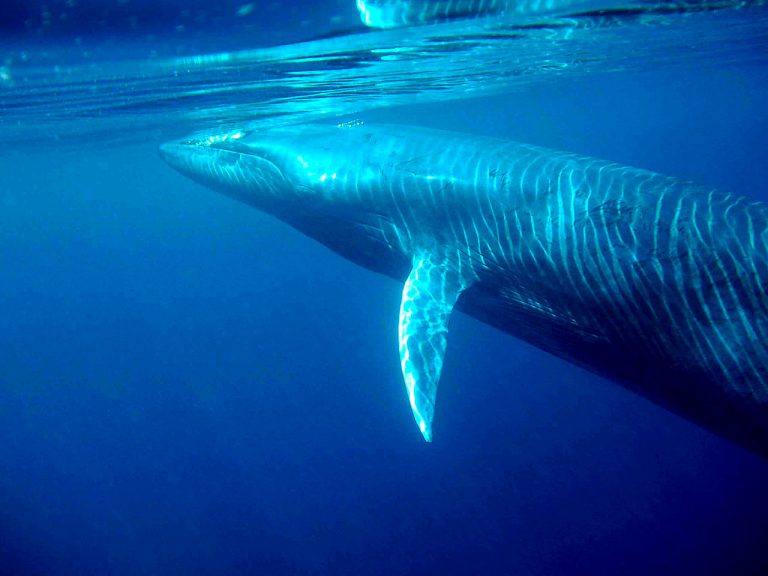10 Best Spots For Whale Watching Worldwide By Species
Here’s our rundown of the top whale watching spots around the world.

There’s nothing quite like seeing an animal thriving in its natural habitat: the wild.
For whale watchers, the appeal of seeing the planet’s largest creatures increases when you realize how gentle they are despite their intimidating size.
Our list include different species from humpbacks, to belugas, sperm whales, and even the unforgettable the blue whale: the largest creature ever to live on the face of the Earth.
Here are the best whale watching spots you can visit worldwide.
We’re pretty sure you’ll find one near you even if you don’t want to travel far.
10 Of The Best Spots For Whale Watching Worldwide By Species
1) Nunavut, Canada
Species: Beluga whales, and Narwhals.
The Beluga whale is easily distinguished from other whale species by one striking feature: its white color (though calves are gray).
This striking and stark coloration makes them a pleasure to watch along with their frisky nature too. There’s never a dull moment with these whales as they play, make loud sounds, thrash about, and even spit water at other whales and humans close by!
Nunavut, Canada (specifically the Cunningham inlet) is a transit spot to about 2,000 beluga whales for roughly four weeks annually.
In addition, there’s a whale watching spot on land if you’d rather not go in the water at all.
Narwhals are another interesting species to watch especially the male of the species. They have a long, pointed ivory tusk growing right through their upper lip. Both species congregate in large numbers and you can get as close as just a few meters to them safely.
Best time to visit? Beluga Whale (late July), Narwhal (June). And there’s round-the-clock daylight in June so you can watch the Narwhals for as long as you like.
2) Hermanus, South Africa
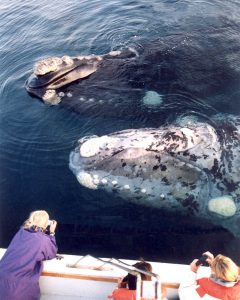
Species: Southern right whales
The temperate waters and abundant sheltered bays makes Hermanus another ideal whale watching spot. These conditions make it an ideal mating and breeding site for Southern right whales.
These whales are known for having the largest testicles among all animals with a combined weight of 1 ton (2,000 lbs.) per pair.
Visitors are sure to see many of these whales playing just a few meters from the shore.
Best time to visit? – From early May to November ending.
3) The Azores
Species: Blue whales, Sperm whales, humpback, Sei, short-finned pilot, orca, fin whale.
The waters surrounding this group of islands is nutrient-dense with the kind of prey most whales feed on: crustaceans and plankton. This makes it a busy whale watching spot. In fact, the nutrients are enough to sustain various whale species, some resident and some transitioning.
Blue whales in particular are a must-see if you’re visiting the area. Describing them as massive is an understatement!
They pass through the Azores in spring while on their northern migration. This species easily reaches 30 meters (98 feet) long with weights of up to 200 tons. Also, consider this: its tongue weighs about the same as an elephant, its heart weighs the same as a small automobile, and its major arteries are so large that a human child can pass through them comfortably.
Other species you’ll spot here include Sperm whales, humpbacks, sei whales, short-finned pilot, fin whales, and even orcas (killer whales). To add to that, there’s an abundance of other sea creatures like dolphins, turtles, and manta rays.
Best time to Visit? – Blue, fin, and sei whales (March to May/early June), Sperm Whales (all through the year).
4) Kaikoura, New Zealand
Species: Sperm whales, blue whale, humpbacks, southern right whales, and orca whales.
Another whale watching spot not to miss is Kaikoura. This place attracts a host of marine wildlife because of the tectonic plates that collide here, and ocean currents that meet off Kaikoura. Also, the underwater terrain sustains a rich marine ecosystem. All these factors attract a large number of diverse sea creatures and mammals.
The sperm whale, for instance, has made this place its home and you can see them all year round. This is a whale that has the largest brain of any animal but was almost hunted to extinction years ago.
You’ll also see blue whales, humpbacks, southern right whales, and orcas. Other popular creatures abundant there include seals, penguins, albatrosses, and dolphins.
Best time to visit? – Sperm whale (all year round), Orcas (December to March), and Humpbacks (June to July).
5) Baja California, Mexico
Species: Gray whales
Gray whales spend their winter months in the warmer waters of Mexico. Specifically, the lagoons of Baja California, and the San Ignacio lagoon where this species mates and gives birth. This is a prequel to their annual 12,400 miles (20,000 km) migration to Alaska and back.
Best time to visit? – Mid-January to mid-April
6) Western Cape, South Africa

Species: Sperm whales, humpback, and Bryde’s whales.
Two of the world’s five great oceans converge here: the Atlantic and the Indian Ocean. As a result, there’s a dizzying array of marine life. When you add the sheltered bays and warmer waters, you’ll understand why so many species favor this region and make it a top whale watching destination.
The whale watching range extends from the south of Cape Town all the way to Durban: some 1,200 miles. As a matter of fact, you could spot almost 40 different species of whales, and other large mammals e.g. dolphins, off the waters of South Africa.
Sperm whales migrate here to give birth and nurse their calves and visitors can see them from just a few meters away.
Humpbacks stop over during their annual migration, and Bryde’s whales swim further out in deeper waters all year round.
You’ll likely see other fascinating creatures like the Cape fur seals, dolphins, and great white sharks, etc.
Best time to visit? – Sperm whales (June up till November), Humpbacks (May to December), Bryde’s whales (all year round).
7) Sri Lanka
Species: Blue, Sperm, Humpback, Bryde’s Whales
The southernmost edge of Sri Lanka is a marine hotspot because it touches the depths of the continental shelf. You’ll see sperm whales, humpbacks, Bryde’s whales, and the magnificent blue whale too.
In fact, this is arguably the best place on Earth where you’ll see the blue whale so close to shore.
Visitors may also catch glimpses of dolphins, turtles, and flying fish.
Best time to visit? – January till April
8) Hervey Bay, Australia
Species: Humpback whales
Hervey Bay, in southern Queensland, is generally regarded as “the spot” for watching humpback whales. These whales are known for their distinctive knobbly heads and acrobatic breaching displays.
Humpbacks have a habit of feeding well in summer to build up their fat reserves for the winter months. They mate and give birth while living off their fat reserves during winter.
The whales pass many other places on their annual migration but they stop at Hervey Bay for a while to feed and rest. In fact, there’s a whole industry surrounding whale watching here with daily boats going out into the waters during this migration season.
Best time to visit? – July to October/early November
9) Scotland
Species: Humpback, Minke, fin, sperm whales, and orcas.
The waters off the Scottish coast play host to different whale species and other marine wildlife depending on the location and time of year you visit.
You can spot minke whales (Isle of Mull), and large pods of orca (killer whales) around Shetland. Other wildlife you’ll sight include dolphins, porpoises, puffins etc.
Best time to visit? – May to October
10) San Juan Islands, Washington State, USA.
Species: Orca Whale
If you’re more into marine apex predators and hunters, then the Orca whale is for you. These are toothed whales but they belong to the dolphin family. Orcas are famous for their fearsome and relentless hunting tactics. There’s hardly any large-sized sea creature that’s safe from a hungry killer whale!
They’ll hunt walruses, sea lions, and even whale calves and the great white shark too. In fact, great whites are practically helpless when attacked by orcas.
Best time to visit? – Early April to early October.
Remember that planning is essential when embarking on whale watching trips so do enquire further before taking a trip over there. You’ll also need to be patient when you get there but if you go at the right time, it’s almost guaranteed the trip won’t be a waste.
All the above locations also have organized whale watching trips so you can join them for a better chance to spot these modern day sea giants.

